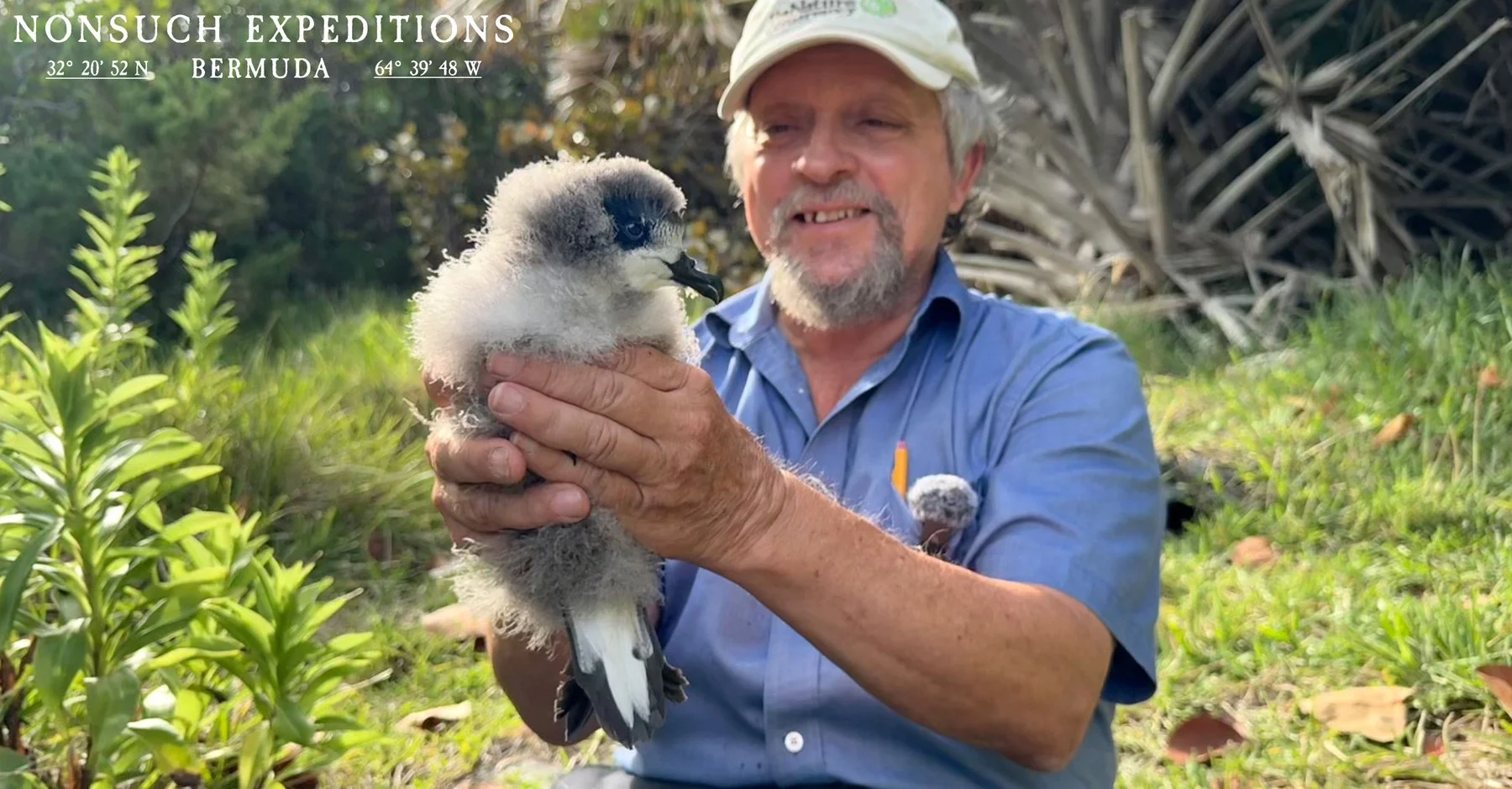In the hours leading up to the passage of Hurricane Melissa, a second Cahow arrived in the CahowCam2 burrow and joined the female that had arrived 2 nights before, and immediately started courtship activities and mating.
This past nesting season she had hatched and successfully raised her first chick with Sampson, the long-time resident of this burrow who had lost his original mate 3 years ago. However, last year observations enabled by the 24/7 LiveStreaming CahowCams installed in this and a neighboring burrow had documented her mating with another male for a few days prior to Sampsons return, resulting in a fight and prompt eviction of the interloping male.
Jeremy with Inna, last Season’s CamCam2 chick, now the subject of a Paternity test.
This past Spring the resulting chick (which survived a tropic bird attack also documented on camera) had its blood drawn (by the vets from Ettrick animal hospital) to be sequenced by project partner BioQuest as part of its ongoing Genomic Population study and in this case a Paternity Test, the results of which will be revealed at a talk on December 3rd at the BUEI exploring their collaborative use of genomics for the conservation of Bermuda’s critically endangered species...
Generally, established Cahow pairs are highly synchronized, often returning to their burrows within hours of each other despite having spent the summer months apart at sea. This would usually mitigate the risk of ex-pair mating activity as the resident male will be there to prevent this, and Sampson was highly synchronized with his previous mate, Suzie, which he paired with for 14 years, often arriving within hours of each other. This resulted in no observed fights as Sampson was always already there, and a very high breeding success rate of 85% for that pair. Suzie however failed to return in 2023 and is presumed to have died at sea, cause unknown. It can take a few years, however for a new pair to "synch up", and this breeding season in the CahowCam2 burrow, for the second year in a row, the new female has returned a few days prior to Sampson and engaged with other males. Last year the resulting fight lasted a few minutes and Sampson’s primary goal seemed to be a prompt eviction, with the interloper being seen again a few days later in another nest further into the colony, seemingly un-injured apart from his pride, perhaps.
Jeremy with Sampson - after the fight exhibiting no injuries
This year however, when Sampson returned on the night of 4th Nov., the resulting fight lasted more than 30 minutes, and Jeremy and I, and followers who were also watching online, were concerned that we were witnessing a fatality as Sampson seemed intent on inflicting major pain, if not killing his opponent, and not just evicting him... Ultimately the loser made his way out of the burrow and after catching his breath flew away, but Jeremy remains concerned that he may have had fatal injuries. (See video here, warning is distressing).
Sampson has now settled back in with his mate, however once again, should she produce a chick its paternity will be in question. For a species that is generally thought to be monogamous throughout their decades long breeding life cycle, how much of this is going on?
The only reason we knew was due to the 24/7 LiveStreams, but how often does this happen throughout the Colony un-observed?
The Nonsuch Expeditions has partnered with local genomics NGO BioQuest to conduct a species-wide genomic population study that will help answer these and other questions, a first in global conservation, especially for a non-captive species that had experienced a near-extinction bottleneck.
This also raises the concern that even for dominant males like Sampson who is one of the largest and strongest in the colony, if he is not synchronized with his mate, he may not be able to pass on his genes…
To learn please attend the Nonsuch Expeditions / BioQuest talk on December 3rd at the BUEI that will reveal the DNA test results along with a discussion of their collaboration to leverage Genomics for the Conservation and Management of Bermuda’s critically endangered species.




